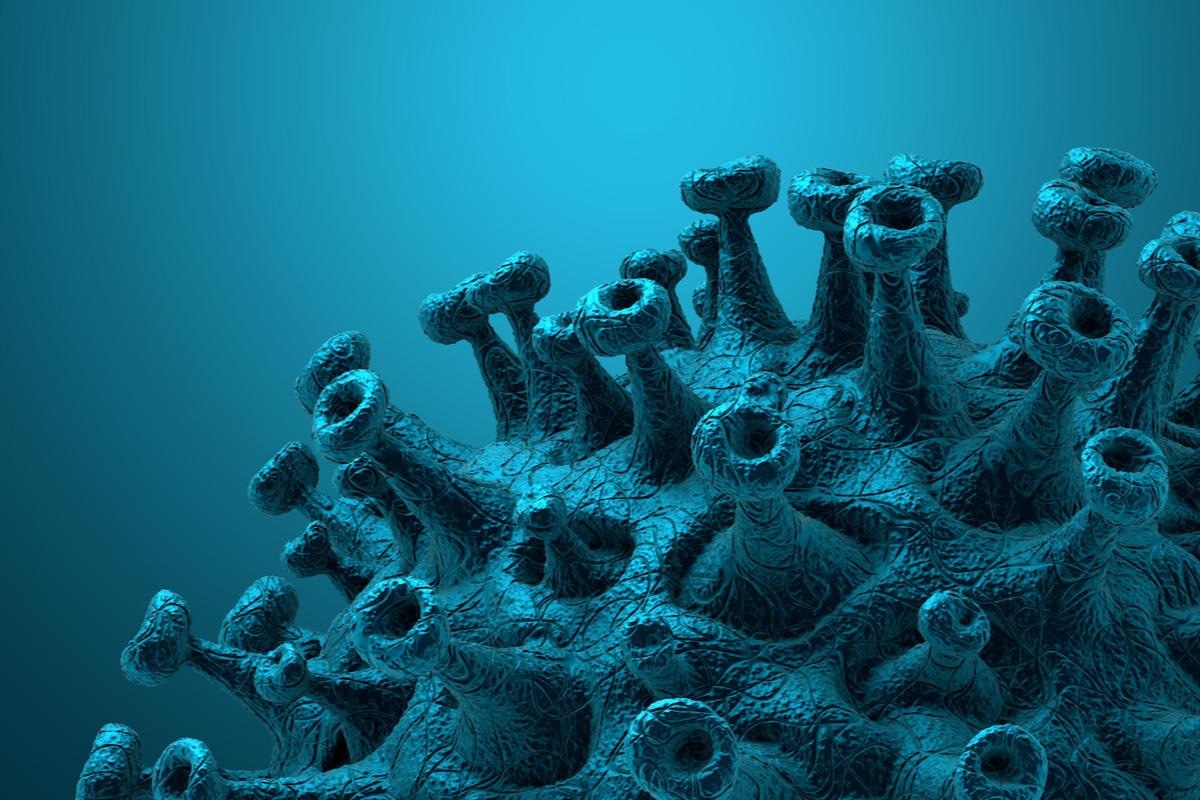In a recent study posted to the bioRxiv* preprint server, researchers demonstrated that the severe acute respiratory syndrome coronavirus 2 (SARS-CoV-2) viroporins precipitate cytokine storm via the alteration of mitochondrial physiology in severe coronavirus disease 2019 (COVID-19).

Following the emergence of SARS-CoV-2 in November 2019, nearly 427 million confirmed cases of COVID-19 and 5.89 million SARS-CoV-2-related deaths have been reported so far globally. The severe form of COVID-19 manifests as acute respiratory distress syndrome, respiratory failure, pneumonia, and cytokine storm, leading to multi-organ system failure.
A major cause of mortality associated with COVID-19 is cytokine storm-induced stimulation of the host nonspecific immunological responses. Nevertheless, the mechanism by which SARS-CoV-2 stimulates the nucleotide-binding domain, leucine-rich repeat family, pyrin domain-containing 3-I (NLRP3-I)-inflammasome, which leads to the cytokine storm, remains unknown.
About the study
In the present study, the scientists elucidated the process by which SARS-CoV-2 activates the inflammatory responses leading to the cytokine storm during COVID-19 by evaluating SARS-CoV-2 viroporin proteins envelope (E) and Orf3a, collectively called 2-E+2-3a.
The team monitored the secretion of mature interleukin-1β (IL-1β) from macrophages derived from a human acute monocytic leukemia-derived cell line (THP1), and the NLRP3, pro-IL-1β, pro-caspase-1, and apoptosis-associated speck-like protein containing a CARD (ASC) transformed human 293T cells to determine the mechanism via 2-E+2-3a-induced mROS activated the NLRP3-I-inflammasome.
Findings
The results suggest that SARS-CoV-2 viroporin proteins E and Orf3a expression in human 293T cells led to elevated cytosolic and mitochondrial calcium (Ca++) uptake by the mitochondrial calcium uniporter (MCU) sensitive to the MCU inhibitor 11 (MCUi11). Further, the viroporin proteins E and Orf3a-induced mitochondrial Ca++ hike in the human 293T cells caused the activation of α-ketoglutarate and pyruvate, leading to excess nicotinamide adenine dinucleotide+ hydrogen (NADH), which further triggered mitochondrial reactive oxygen species (mROS) generation.
In addition, the mROS elevation was inhibited by the treatment with either metalloporphyrin (Mn III) tetrakis (4-benzoic acid) porphyrin (MnTBAP) or mitochondrially targeted catalase (mCAT).
The expression of SARS-CoV-2 viroporin proteins E and Orf3a in the macrophages of the human 293T cells expressing NLRP3-I-inflammasome and the bacterial lipopolysaccharide (LPS)/nigericin-treated THP1 cells with viroporin proteins E and Orf3a expression vector demonstrated increased secretion of NLRP3-I-activated IL-1β secretion. Further, MnTBAP or mCAT treatment of LPS-nigericin treated THP1 macrophages and 293T cells expressing NLRP3-I-inflammasome impaired IL-1β secretion.
The treatment of the 2-E+2-3a transformed and LPS-nigericin treated THP1 macrophages with mitochondrial permeability pore (mtPTP) inhibitor called N-methyl-4-isoleucine-cyclosporin (NIM811) extinguished the secretion of IL-1β, suggesting that the oxidized mitochondrial factor, oxidized mitochondrial deoxyribonucleic acid (Ox-mtDNA) reached the NLRP3-I via mtPTP.
Conclusions
The study findings indicate that the co-expression of the SARS-CoV-2 viroporin proteins E and Orf3a in human 293T cells stimulate the leakage of Ca++ into the cytosol, resulting in mitochondrial as well as cytosolic elevated Ca++ levels. Further, the SARS-CoV-2 2-E+2-3a-mediated elevation of mitochondrial Ca++ leads to a rise in mROS production, which activates the NLRP3-I through mtPTP transport of Ox-mtDNA, triggering IL-1β secretion.
According to the authors, this was the first study showing that the oxidized mitochondrial factor reaches the NRLP3-I-inflammasome via the mtPTP. However, the team failed to identify the oxidized mitochondrial factor and relied on previous reports indicating Ox mtDNA as the oxidized mitochondrial factor.
Previous reports have indicated that the antioxidants such as glutathione, catalase, and N-acetyl cysteine (NAC) can reduce SARS-CoV-2 propagation and pathology. The current study expands this inference by proving that a high level of therapeutic potential against SARS-CoV-2 was associated with the mitochondrially targeted antioxidants, such as eukaryotic-8 (EUK-8) and EUK-134, and MnTBAP, or mtPTP inhibitors like NIM811.
In detail, the study suggests that enhancing the mitochondrial antioxidant defenses via genetic expression of mCAT or treatment with the pharmacological mROS scavenger MnTBAP detoxifies the SARS-CoV-2 viroporin proteins E and Orf3a-induced mROS and inhibits the activation of the NLRP3-I, thereby mitigating the cytokine storm associated with the severe form of SARS-CoV-2 infection.
Overall, the study illustrates that SARS-CoV-2 engages with the NLRP3-I-inflammasome through the 2-E+2-3a viroporin manipulation of mtPTP.
*Important notice
bioRxiv publishes preliminary scientific reports that are not peer-reviewed and, therefore, should not be regarded as conclusive, guide clinical practice/health-related behavior, or treated as established information.
- Joseph W Guarnieri, Alessia Angelin, Deborah G Murdoch, Prasanth Portluri, Timothy Lie, Douglas C. Wallace. (2022). SARS-CoV-2 Viroporins Activate The NLRP3-Inflammasome Via The Mitochondrial Permeability Transition Pore. bioRxiv. doi: https://doi.org/10.1101/2022.02.19.481139 https://www.biorxiv.org/content/10.1101/2022.02.19.481139v1
Posted in: Medical Science News | Medical Research News | Disease/Infection News
Tags: Acute monocytic leukemia, Acute Respiratory Distress Syndrome, Adenine, Antioxidant, Apoptosis, Calcium, Cell, Cell Line, Coronavirus, Coronavirus Disease COVID-19, covid-19, Cysteine, Cytokine, Genetic, Inflammasome, Interleukin, Isoleucine, Leucine, Leukemia, Mortality, Nucleotide, Oxygen, Pathology, Physiology, Pneumonia, Propagation, Protein, Respiratory, SARS, SARS-CoV-2, Severe Acute Respiratory, Severe Acute Respiratory Syndrome, Syndrome

Written by
Shanet Susan Alex
Shanet Susan Alex, a medical writer, based in Kerala, India, is a Doctor of Pharmacy graduate from Kerala University of Health Sciences. Her academic background is in clinical pharmacy and research, and she is passionate about medical writing. Shanet has published papers in the International Journal of Medical Science and Current Research (IJMSCR), the International Journal of Pharmacy (IJP), and the International Journal of Medical Science and Applied Research (IJMSAR). Apart from work, she enjoys listening to music and watching movies.
Source: Read Full Article
